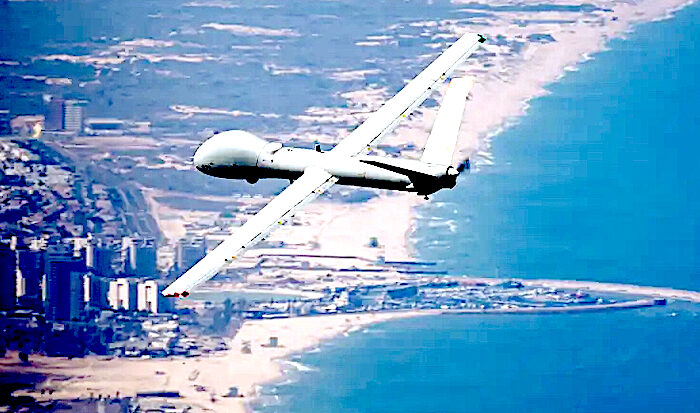According to sources, commanders will now be allowed to use the platforms not only as cover and intelligence for forces during operations but also to carry out strikes should armed gunmen be identified as posing imminent threats to their troops.
The order comes as Israeli security forces have encountered a significant rise in shooting attacks and massive gunfire during arrest raids, specifically in the northern West Bank cities of Jenin and Nablus.
On Wednesday, four Palestinians were killed and 44 others injured during an arrest raid that saw heavy gunfire targeting troops who had entered Jenin's refugee camp to arrest Abd al-Rahman Hazem, brother of the terrorist who killed three civilians on Tel Aviv's Dizengoff Street in April.
Kohavi later met with Central Command chief Maj.-Gen. Yehuda Fuchs and West Bank Division Commander Brig.-Gen. Avi Blot, and was presented with an updated assessment of the region. During the meeting, the use of the aerial platforms was discussed by the senior officers.
It's believed that the order was given as the continued violence threatens to drag Israel into a more extensive operation in the northern West Bank, similar to Operation Defensive Shield in 2002.
Speaking to Army Radio on Thursday morning, Interior Minister Omer Bar Lev said that while "no one has an interest in launching a large-scale operation," should the situation continue to deteriorate, "it can happen."
Israel is "making targeted efforts and countermeasures" in an attempt to prevent such a scenario, Bar Lev said, adding that
"the possibility that Hamas and Palestinian Islamic Jihad could join in from the Gaza Strip should we launch an operation, will not deter us."Preparation for drone use
In September, The Jerusalem Post confirmed that IDF commanders had undergone training to prepare them for the possibility of using armed drones during counter-terrorism operations.
Commander of the Judea and Samaria Division Brig.-Gen. Yaniv Alaluf and commander of the Menashe Brigade Col. Arik Moyal recently underwent training to operate an air force assault command center that monitors and controls armed drones.
Following their training on the systems, they will be able to command the use of Elbit's Hermes 450 drones (known as Zik in Hebrew) during operations.
The Israel Air Force has been using armed drones since as early as 2008 in targeted assassinations in Gaza against Hamas and Islamic Jihad terrorists but they have yet to be used in the West Bank.
It's believed that Kohavi gave the green light to use the platforms in an attempt to reduce the escalation of violence.
In May, the IDF was already mulling a revamping of its defensive strategy in the West Bank following the death of 47-year-old YAMAM officer Sgt.-Maj. Noam Raz, who was killed by Palestinian gunmen as forces were conducting a raid in Jenin.
According to a report in Haaretz, the military was considering using helicopters and even introducing special drone units to secure group troops during operations and to fire at armed Palestinians.
Previous use of drones
Over the past decade, the operational use of drones by the IAF and other air forces worldwide has increased drastically, with almost every operation now seeing the use of these platforms. IAF drone squadrons fly about 80% of the air force's flight hours, and with four drone squadrons based at Palmahim Air Force Base, 70% of all IAF flight hours originate from the base just south of Tel Aviv.
In August, the Military Censor allowed the publication of the use of attack drones by the Israel Air Force.
While the international press has reported the use of these drones by the IAF for at least the past 20 years, which has been extensively documented in US diplomatic cables as well as at international air shows, the IDF never publicly disclosed the use of such platforms. Israeli journalists who attempted to publish information from those reports were blocked by the censor.




Reader Comments
to our Newsletter